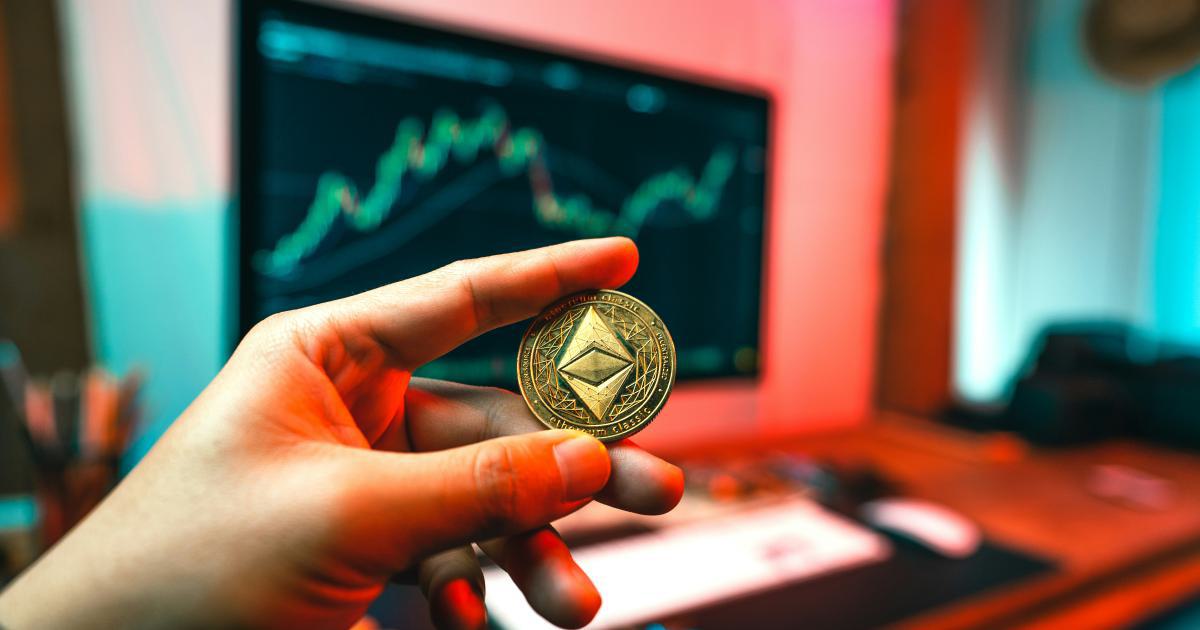Confidence or Overconfidence in Trading Psychology: What Drives Success?

Trading in the modern financial landscape demands more than just technical skills or market acumen; it requires a nuanced understanding of one's own psychology. Within the intricate interplay of confidence or overconfidence, traders experience varying degrees of assurance and caution which in turn significantly influence their success or failure in the market. In the fast-paced world of trading, distinguishing between confidence and overconfidence is essential to develop a balanced approach that nurtures informed decision-making while avoiding the pitfalls of irrational exuberance.
The Role of Trading Psychology in Market Success
Trading psychology is the study of human emotion and decision-making in response to market movements. It encompasses how traders handle uncertainties, include risk-taking behaviors, and maintain discipline in the face of unexpected outcomes. At its core, trading psychology is reflective of mental states shaped by both intrinsic and extrinsic factors. Understanding the subtle difference between genuine confidence and overconfidence can be the difference between a profitable strategy and catastrophic losses.
In this section, we explore the significance of trading psychology, and how the interplay of confidence or overconfidence can drive decision-making processes. Many traders often succumb to market whims because they misinterpret success as an assurance that future trades will yield similar results—ignoring underlying market dynamics and risk variables.
A solid foundation of trading psychology ensures that emotions do not override logic, discipline, or clear risk analysis. Furthermore, appreciating psychological factors helps traders to better prepare for market volatility and avoid common psychological pitfalls that can lead to severe financial setbacks.
Understanding Confidence and Overconfidence
Confidence in trading refers to the belief in one’s skills, strategies, and decision-making capabilities, developed through experience, education, and methodical practice. It results in calm, measured actions and realistic expectations concerning risk and reward. On the other hand, overconfidence is the excessive belief in one's ability to predict market movements, often ignoring the inherent uncertainty and randomness of markets. Overconfident traders may overtrade, disregard risk management protocols, or fail to account for adverse information, thereby increasing the likelihood of significant losses.
Real-life trading examples indicate that traders who exhibit measured confidence are more likely to implement proper risk management strategies. For example, a trader who meticulously plans each entry and exit is likely to reinforce their strategies with well-thought-out research and back-tested methods. In contrast, a trader whose decisions are fueled by overconfidence may ignore emerging market signals or rely purely on gut feelings—even in the face of contradictory evidence.

The key difference lies in how experiences and information are processed. Confidence allows traders to acknowledge mistakes and adjust strategies accordingly, whereas overconfidence can blind them to repeated errors. It is crucial for traders to develop an awareness of when their confidence shifts into overconfidence, so that they can recalibrate their approach to align with market realities.
The Impact of Confidence or Overconfidence on Trading Decisions
Psychological Influences and Emotional Regulation
Emotions play a significant role in trading decisions. The excitement of a rising market or the dread of an impending downturn can trigger responses that deviate from a trader’s strategic plan. Confidence equips traders to manage these urges, ensuring that their actions are guided by informed analysis rather than fleeting emotions. When traders maintain genuine confidence, they remain resilient in adverse situations, treat losses as learning opportunities, and implement risk management strategies accordingly.
Overconfidence, however, often leads to disproportionate risk-taking. Overconfident traders might double down on losing positions or ignore stop-loss orders, tempted by the idea that they can “beat the market” regardless of statistical odds. Such behavior can lead to large, uncontrollable losses.
Cognitive biases, such as confirmation bias and the illusion of control, also stem from overconfidence. These biases cause traders to selectively embed information that confirms their preconceived notions while disregarding data that challenges their views. Understanding these biases is crucial for any trader wishing to cultivate a balanced mindset.
Real-World Examples and Case Studies
Several well-known cases in financial history illustrate the dramatic consequences of overconfidence. For instance, some high-profile traders during the dot-com bubble became overly confident in their predictive abilities, dismissing warning signals that eventually led to a market crash. In contrast, other investors who maintained a sense of cautious confidence diversified their portfolios and minimized their exposure to volatile assets. This measured approach allowed them to weather the crisis with considerably less financial damage.
A notable case involves a trader who achieved massive gains during a bull market but soon found that his overconfidence led him to ignore emerging indicators of a downturn. When the market corrected, his portfolio experienced significant losses, highlighting the dangers of allowing overconfidence to override rational decision-making.
Benefits of a Healthy Confidence in Trading
A well-calibrated sense of confidence contributes to a systematic approach in trading. It can bring about several benefits, including:
- Enhanced decision-making: Confident traders tend to rely on objective analysis rather than emotional impulses.
- Better risk management: By acknowledging both strengths and weaknesses, such traders tend to safeguard their capital with well-defined strategies.
- Adaptability: A balanced level of confidence allows traders to learn from mistakes and adapt to changing market conditions.
- Reduced Stress: When decisions are data-driven and backed by confidence, trading becomes less stressful, even during volatile times.
The Role of Education and Experience
The foundation of authentic trading confidence is built on education, simulation, and real-market experience. New traders can benefit immensely from structured learning programs that combine theoretical knowledge with practical applications. Mentorship and peer support further enhance this learning curve, allowing for shared experiences and objective feedback. Over time, experience reinforces well-founded beliefs while cautioning against impulsive actions.
Educational resources, such as trading courses, webinars, and interactive platforms, help in understanding how markets operate. They also play a significant role in distinguishing between informed confidence and overconfident speculation.
Building Healthy Confidence: Practical Steps
Develop a strategic trading plan: Outline clear risk/reward ratios, entry-exit points, and position sizes to ensure disciplined trading.
Analyze past performance: Conduct regular reviews of trading performance to identify both strengths and areas for improvement.
Engage in continuous learning: Attend seminars, read industry literature, and interact with experienced traders.
Use simulation platforms: Practice trading in virtual environments to test strategies without risking real capital.
Maintain a trading journal: Document trades, decisions, and emotions to understand behavioral patterns and refine strategies over time.
By following these steps, traders can steadily build a robust framework of knowledge and experience that cultivates genuine confidence, reducing the likelihood of shifting into overconfident territory.

The Pitfalls of Overconfidence and Strategies to Mitigate Them
Overconfidence in trading can lead to several critical errors. It's important for traders to identify potential pitfalls and implement corrective strategies.
Common Pitfalls Associated with Overconfidence
- Underestimating market risks: Overconfident traders might assume they are impervious to market fluctuations, leading to unchecked exposure.
- Ignoring diversification: A belief in one’s infallibility can result in overly concentrated portfolios that are vulnerable to market shocks.
- Overtrading: A sense of omnipotence may push traders to execute too many trades, increasing transaction costs and diluting the effectiveness of selected strategies.
- Refusal to acknowledge mistakes: Overconfidence can lead to emotional attachment to a position, causing traders to persist with losing strategies instead of cutting losses.
- Cognitive biases: As mentioned earlier, overconfidence often enhances cognitive biases such as confirmation bias, resulting in a skewed perception of market information.
Psychological Tools to Counteract Overconfidence
To maintain a balanced state of mind, traders can employ several psychological techniques:
Mindfulness and Meditation: These practices help in reducing stress and improving self-awareness, making it easier to recognize impulsive behavior.
Premortem Analysis: Before executing a trade, imagine potential failures and analyze what might go wrong to prepare effective countermeasures.
Seek Objective Feedback: Regularly discuss trading strategies and outcomes with mentors or peers to gain an unbiased perspective.
Set Performance Benchmarks: By establishing concrete performance metrics, traders can better evaluate their progress and detect anomalies in their decision-making processes.
Implement Automated Systems: Using algorithm-based trading can help reduce the impact of human emotions, ensuring that trades are executed according to pre-set criteria rather than subjective judgment.
A Structured Approach to Balancing Confidence
Traders should create systems that allow for self-monitoring and timely adjustments in strategy. This involves setting up automated alerts, diversifying portfolios, and engaging in routine self-assessments to gauge one’s mental state. They should be open to revising strategies and accepting losses as learning opportunities. Such practices ensure that confidence remains grounded in reality.
Psychological Studies and Research on Trading Behavior
Academic research has shed light on the dynamics of confidence and overconfidence in trading. Studies show that overconfident traders often overestimate their knowledge and predictive capabilities. This miscalculation can lead to increased trading volume, reduced likelihood of diversification, and a diminished capacity to absorb market volatility.
Key Research Findings
- A considerable percentage of day traders tend to overestimate their skill level, which correlates with poor long-term performance.
- Research in behavioral finance indicates that excessive confidence contributes significantly to market bubbles and crashes.
- Experimental studies exhibit that traders who engage in reflective decision-making—versus those who act impulsively—tend to achieve better risk-adjusted returns.
- Statistical analysis has demonstrated that low-risk tolerance, when paired with confident decision-making, enhances the probability of trading success.
These findings provide a compelling argument for promoting balanced confidence. They encourage traders and educators to focus on strategies that combine technical training with psychological resilience.
The Neural Basis of Decision Making
Neuroscientific studies have explored the pathways involved in risk perception and decision-making. Brain regions such as the prefrontal cortex play key roles in weighing risk versus reward. Findings indicate that individuals with higher activity in these areas tend to make more calculated decisions, avoiding the trap of overconfidence. This research reinforces the notion that psychological training and mindfulness practices can have a tangible impact on trading outcomes.
Strategies to Develop Sustainable Trading Confidence
Developing sustainable trading confidence involves a continuous loop of education, practice, and self-evaluation. Here are some actionable solutions to foster balanced confidence:
Step 1: Educate Yourself Thoroughly
- Begin with a strong foundation in financial fundamentals, including technical and fundamental analysis.
- Engage with reputable sources of market research and financial news.
- Understand the psychological influences on market behavior and your personal biases.
Step 2: Develop and Test Trading Strategies
- Use historical data to backtest trading strategies before applying them in live markets.
- Start with small positions and gradually increase your exposure as your strategy proves consistent.
- Incorporate risk management tools such as stop-loss orders and position sizing to safeguard your capital.
Step 3: Keep a Detailed Trading Journal
- Record every trade, including the rationale behind your decisions and your emotional state.
- Periodically review your journal to identify patterns in your behavior, particularly any signs of overconfidence.
- Adjust your strategies dynamically based on your self-observations and market feedback.
Step 4: Implement Regular Self-Assessments
- Utilize performance benchmarks to evaluate your results objectively.
- Conduct regular self-reflection sessions to assess whether your confidence levels are justified by your trading outcomes.
- Invite feedback from experienced peers or mentors who can offer an external perspective.
Step 5: Incorporate Psychological Techniques
- Engage in techniques such as mindfulness, journaling, and even professional counseling if necessary, to maintain your mental clarity.
- Set realistic targets and risk limits to ensure that your behavior remains controlled and measured.
- Practice stress management techniques and ensure that your trading does not adversely affect your overall health.
By following these steps diligently, traders can achieve a state of confidence that is robust and sustainable, steering clear of the hazards of overconfidence.

Case Studies: Learning from Success and Failure
Analyzing detailed case studies can provide valuable insights into the practical application of balanced trading psychology.
Case Study 1: A Cautious Investor’s Journey
Consider the case of Lisa, an experienced trader who began her career with rigorous education and small-scale trading. Lisa’s journey illustrates the importance of steadily building confidence:
- She started by mastering essential trading concepts and continuously educated herself through market literature.
- As her experience grew, she maintained a disciplined trading journal, always documenting her successes and mistakes.
- Despite experiencing a few losses, Lisa’s ability to learn from each setback allowed her to refine her strategies.
- She avoided the trap of overconfidence by relying on detailed market analysis and peer feedback.
Lisa’s story highlights that genuine success in trading emerges from a blend of knowledge, experience, and a constant willingness to learn and adapt.
Case Study 2: The Perils of Unchecked Overconfidence
Another illustrative case is that of Mark, who rose to early success during a favorable market trend. Buoyed by early gains, Mark grew overconfident and began taking excessive risks:
- He increasingly ignored his disciplined trading strategies and relied on hunches instead of careful analysis.
- Mark’s overtrading resulted in hefty transaction fees and, eventually, significant losses during an unexpected market downturn.
- An unwillingness to accept his mistakes and revise his strategies led to a prolonged period of poor performance.
- Ultimately, Mark’s experience serves as a cautionary tale: overconfidence without proper risk management can rapidly erode even substantial capital.
These contrasting case studies emphasize that while confidence is a valuable asset, overconfidence can be a trader’s undoing. The key lies in discerning the fine line between healthy assurance and hubris.
The Future of Trading and Psychological Insights
As technology continues to evolve, the integration of artificial intelligence, machine learning, and algorithmic trading is reshaping the trading environment. Nonetheless, the core of successful trading remains deeply rooted in sound psychological principles.
Embracing Technological Advancements
Modern trading platforms increasingly offer tools that help mitigate the risk of overconfidence:
- Real-time analytics and automated risk management algorithms aid traders in adhering to their predefined strategies.
- Data visualization tools facilitate better comprehension of complex market trends, enabling traders to make more informed decisions.
- Educational software and simulations offer virtual trading environments, allowing aspiring traders to hone their skills without incurring real financial risk.
While technology unquestionably enhances trading precision, it cannot replace the human element. Psychological resilience, self-awareness, and the ability to remain humble in the face of market unpredictability remain irreplaceable attributes.
Integrating Psychological Training with Technology
The future of trading lies in an interdisciplinary approach—merging advanced technology with in-depth psychological training:
- Trading platforms that integrate sentiment analysis provide real-time insights into market psychology, further assisting traders in recognizing potential cognitive biases.
- Virtual reality and AI-based training modules are being developed to simulate high-pressure trading scenarios, enabling traders to practice maintaining control over their emotions.
- These technological enhancements serve as supplements to, rather than replacements for, the disciplined practices rooted in sound psychological strategy.
By embracing these advancements, traders can enhance their analytical capabilities while keeping their mental state balanced and resilient.
Concluding Thoughts: Achieving Success Through Balanced Psychology
The journey through trading psychology reveals that the interplay of confidence or overconfidence can be both a powerful asset and a dangerous liability. While genuine confidence empowers traders to make informed, disciplined decisions, unchecked overconfidence can cloud judgment and lead to severe financial setbacks.
Key takeaways include:
- Understanding the difference between healthy confidence and overconfidence is fundamental.
- Real-world examples and academic studies affirm that disciplined, reflective trading practices yield better long-term results.
- A combination of continuous education, practical experience, rigorous self-assessment, and psychological mindfulness forms the backbone of successful trading.
- Technological advancements offer valuable tools, yet the human element of balanced judgement remains essential.
Ultimately, traders who learn to navigate the delicate balance between confidence and overconfidence position themselves for sustainable success. By valuing insight, embracing continuous learning, and remaining ever-conscious of their psychological state, traders can harness the power of confidence while mitigating the risks associated with overconfidence.
As financial markets continue to evolve, so too will the strategies that support balanced decision-making. By integrating both traditional trading wisdom and modern psychological insights, the future promises a more resilient, adaptable generation of market participants—one that is prepared to thrive in the face of uncertainty and change.
In summary, the distinction between confidence and overconfidence is more than just semantic; it is a fundamental principle that underpins trading success. Whether you are an emerging trader or a seasoned investor, building a balanced mindset is imperative for long-term viability in the dynamic world of finance. Embrace learning, self-awareness, and disciplined strategy, and let your genuine confidence drive you towards success while keeping the specter of overconfidence at bay.
Unlock Trading Potential with Automated Analysis
Tired of missing opportunities and making suboptimal trading decisions? TrendSpider's cutting-edge platform automates complex technical analysis, saving you time and reducing human error.
With multi-timeframe analysis, dynamic alerts, backtesting, and customizable charting, you'll gain a competitive edge in identifying trends and making informed trades across global markets.
Unleash the Power of Automated Trading Analysis
Are you struggling to keep up with the fast-paced trading world? TrendSpider empowers you with cutting-edge tools for optimal strategy execution.
Our automated technical analysis suite eliminates guesswork, backtests strategies, and delivers real-time alerts, saving you valuable time and effort.
Sophia Dekkers
23 posts written
Driven by an insatiable curiosity for behavioral economics and its impact on trading psychology, Sophia Dekkers offers groundbreaking insights into harnessing cognitive biases for improved decision-making.
Read Articles




